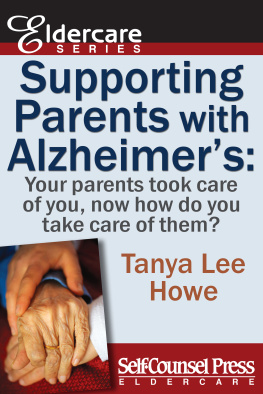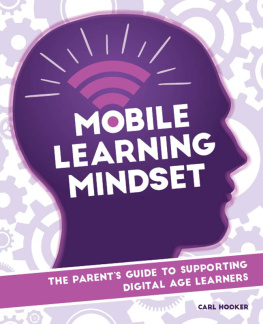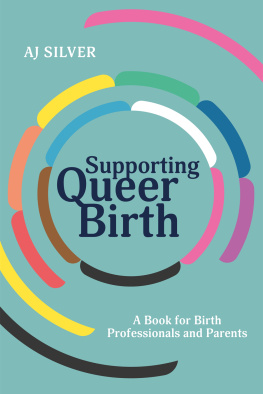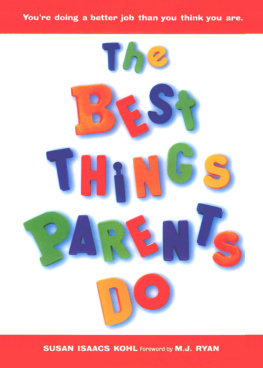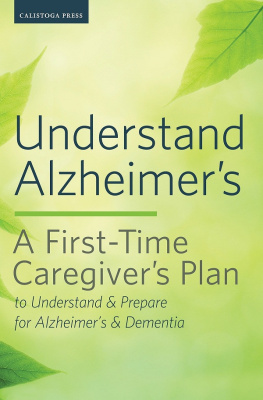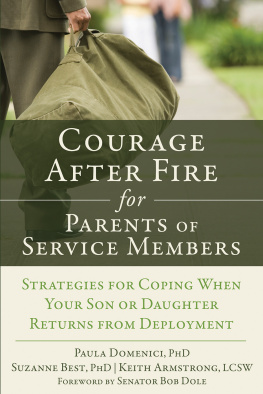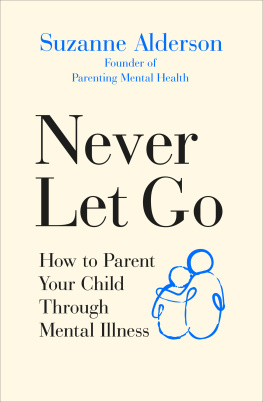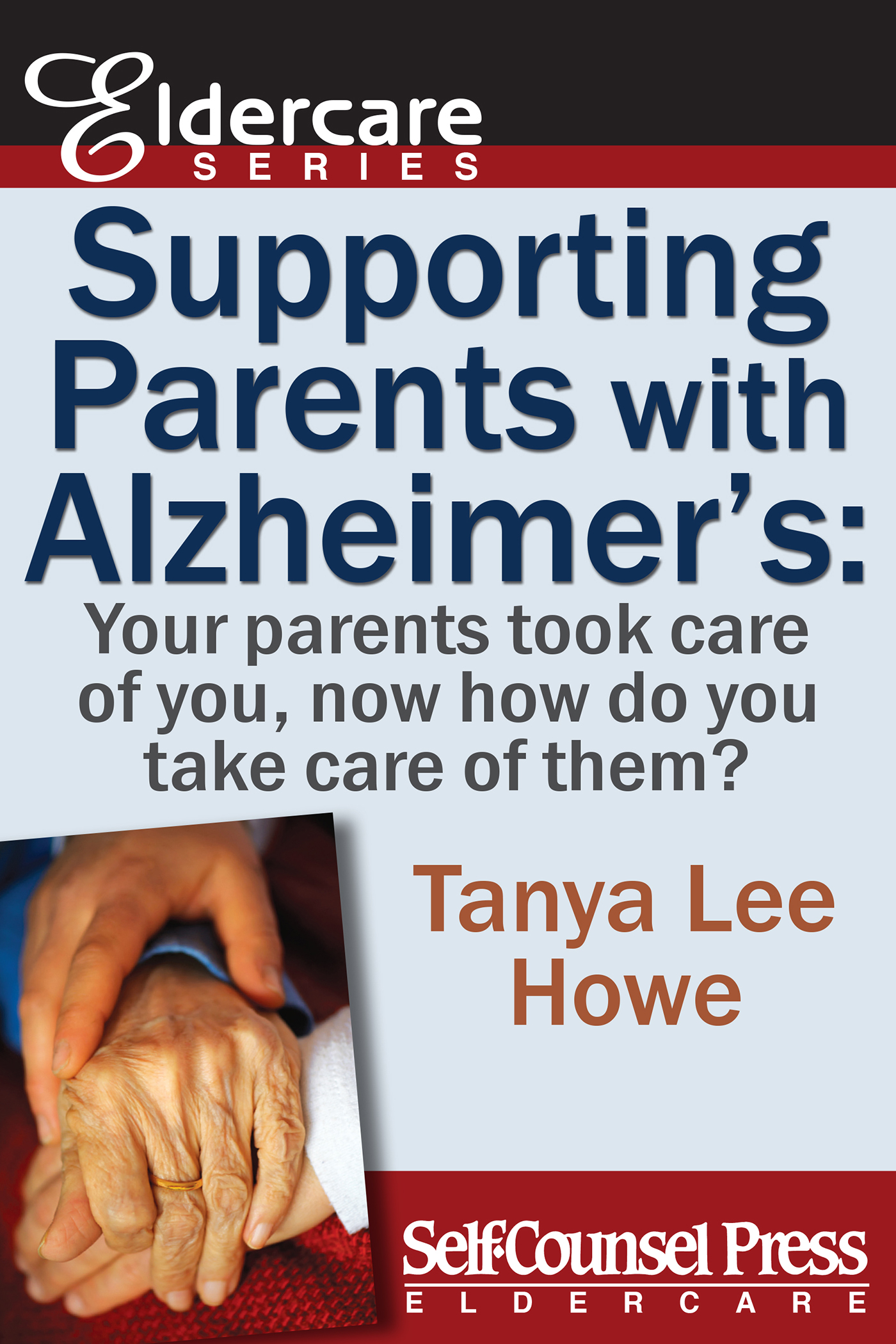Introduction
You can download free worksheets and checklists to create your own Alzheimers Planner for Caregivers, as well as get links to additional resources by going to this address with your computer web browser:
http://self-counsel.com/updates/alz/check13.html
Alzheimers disease can be a hard journey, but it can also be filled with many special moments you can share with your loved one.
Unknown
This book is designed to help those moving a parent with Alzheimers Disease (or with another form of dementia) into a family members home. My research is based on talking with professionals (e.g., doctors, the Alzheimer Society, nurses) and other families in similar situations; it is also based on the steps our family took to move my mother, who was in the mid-stage of Alzheimers disease (AD) and was rapidly moving toward the advanced stage at the time we stepped in to help.
I believe moving Mom home has given her another year with family, as opposed to her having to move straight into a long-term care home. This book will give you an understanding of what we have done to help work with the disease and to make life as comfortable as we can for her before the next step of moving her into long-term care. We have given her a quality of life she wouldnt have had in her former home. She needs someone around 24 hours a day, seven days a week, which has been a struggle at times but the good memories the family has gathered during this time have been worth it.
Its a personal decision that family members need to discuss before moving a parent. Im fortunate to have a sister-in-law, Sheila, who feels like a blood sister to me. This experience has made our families grow closer, which is something Mom has always wanted for us.
My house does not include an extra bedroom; instead, Sheila offered her and my brothers home. My oldest niece, Myranda, had moved away, so they had a room to spare. I have to commend my sister-in-law because she stepped up without hesitation.
Our journey with Mom began in the summer of 2011. Mom drove from Saskatoon, Saskatchewan, to Lethbridge, Alberta, for a surprise visit. It had been a couple years since I had seen her, which was not unusual for us weve always been close by phone. Her surprise visit wasnt unusual either because over the years, when she wanted to go for a short vacation she would just hop in her car and show up on our doorstep.
I knew she was coming but she was two hours late when I received a frantic phone call from her. She told me she was at a corner store, but when I looked at the call display on my phone, it named another store. I calmly asked her to put the manager on the phone, which turned out to be someone I knew. The manager kept an eye on her as she paced in front of the store until I got there.
When I drove up to the store, she didnt recognize me until I said, Mom. Relief washed over her face and she rushed to my passenger car door trying to open it. Mom, wheres your car? She looked at me confused and attempted to open the passenger door again. Again, I asked her where her car was. Her face showed a moment of clarity and then she marched across the parking lot to her car, and then she drove behind me to my home. She was slightly confused and anxious for the rest of the evening.
This book describes the steps and information Sheila and I had to learn in order to help Mom with the transition of moving. It was hard for all of us because we didnt have a clue about what to do or who to contact. It was so overwhelming for me, because the person I turned to for advice was now depending on me to give her advice and make decisions for her. Being that Ive never had children, I knew very little about taking care of someone who was dependent. It is a huge responsibility but also an honor that Mom trusted us to take care of her during this time.
While this book was mainly written for sons and daughters looking for answers on how to deal with their parents who may now be going into early to mid-stage AD or dementia; in this world of blended families more and more adults are having to help uncles, aunts, stepparents, and even elderly siblings with cognitive impairments. AD doesnt affect only seniors; there are cases of people in their 30s, 40s, and 50s with the disease as well.
When a person you love begins to lose the ability to think properly, remember what happened yesterday (or even an hour ago), formulate ideas, or concentrate on a simple task, what do you do? How do you convince someone he or she can no longer take care of himself or herself? Chapter 1 discusses signs that your loved one needs someone to step in and help him or her. It also includes information on how to talk with the person about the move.
There are many good books dedicated solely to the topics of power of attorney, enduring power of attorney, living wills, and health-care directives; however, you will need to know some basics about these important documents. Chapters 1 and 5 include information about the necessity of having this paperwork in place before you begin moving your elderly relative.
We discovered the value of the Memory Book from Mom. She had been writing in memory books for the previous seven years. It wasnt so much a journal, but a book to keep track of what she was doing from day to day. She included shopping lists, trips to the doctor, social events, and sometimes her mood swings and fears. When we mentioned this to her new doctor in Alberta, he said, You have inspired me to encourage my other patients with memory issues to create their own memory books. This in turn, gave Mom a big boost of confidence knowing she had inspired a doctor. (I owe Dr. Derman a big thank you for all the kindness, patience, and understanding he has given to both Mom and me.) Chapter 2 goes into the benefits of having your loved one create his or her own Memory Book.
Sheila and I divided our caretaking duties, but we kept all the information in one book that we passed back and forth between us when we took Mom to different appointments. We called this the Alzheimers Planner for Caregivers. This was one of the most important tools for us to stay organized. It also helped us to reduce our caregiver stress. (See Chapter 3 for more information.)
You will find in the following pages help for transitioning the person with AD to your home. There are many reasons your parent may need to move in with you. In some areas there are long waiting lists for long-term care homes, and in some situations, the person cannot afford to move into a care home so the only option is to move the person into a family members home. The biggest challenge is helping the person adjust to the new living environment (see Chapter 4), but it can also be a big adjustment for the caretakers.
What you and I deem organized and logical will not always be so with a person suffering from AD. You may find important paperwork stashed in books, boxes, kitchen cupboards, or nowhere at all, so where do you begin? What do you do with all the stuff in storage or the knickknacks that wont fit in the new place? Chapter 4 discusses the problems and solutions for going through someones personal items.
There are many important government agencies you will need to contact as well as doctors and other experts who understand AD. If your parent is no longer fit to drive, how do you approach this topic? This can be a touchy subject because most people consider a license as a form of independence. Chapter 5 will take you through the steps to dealing with these important topics.

